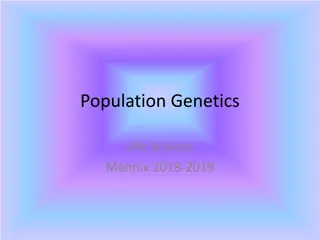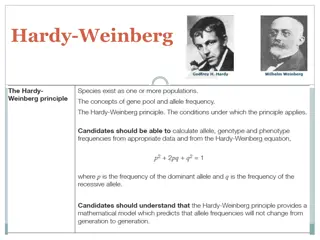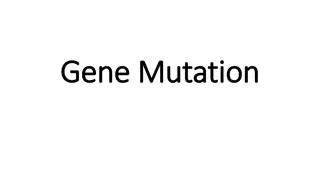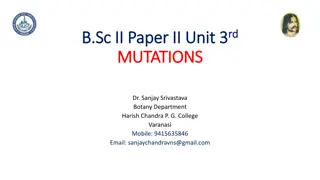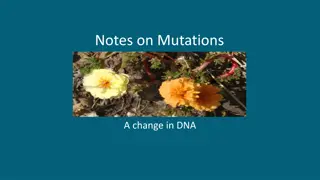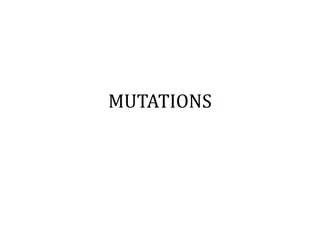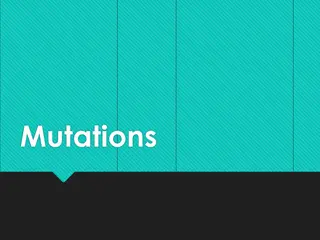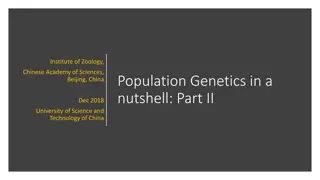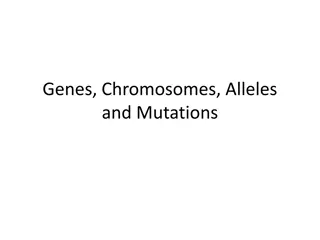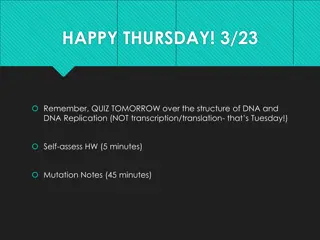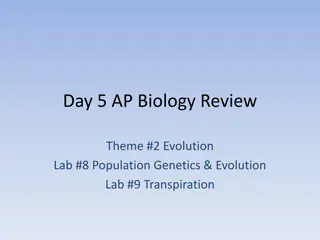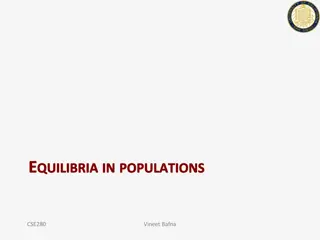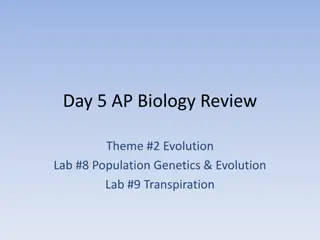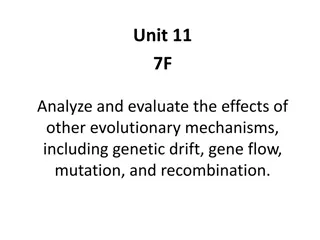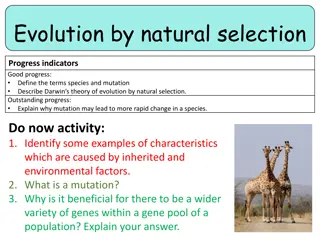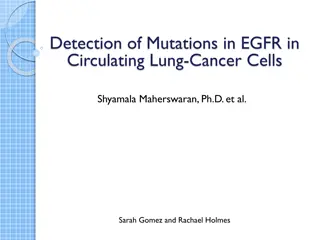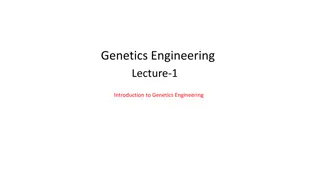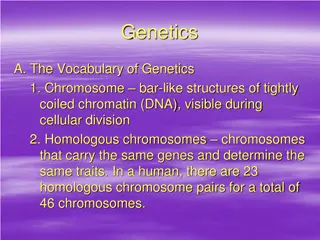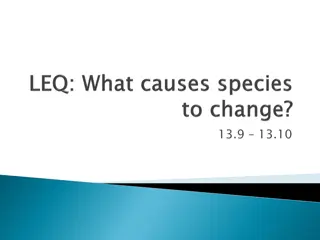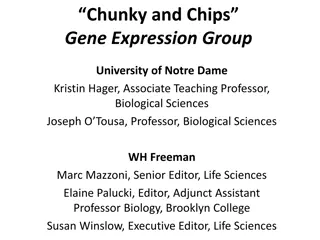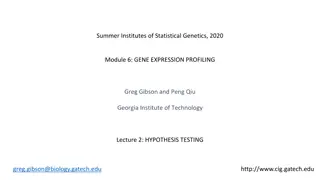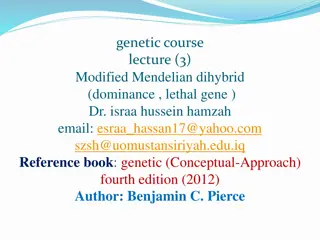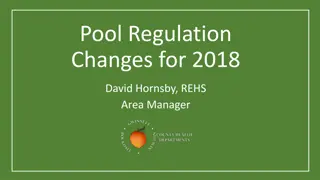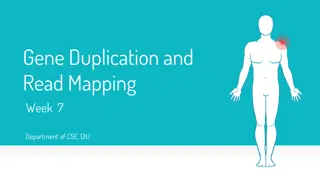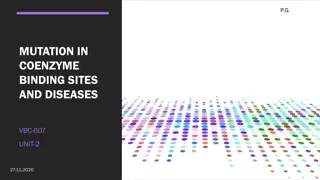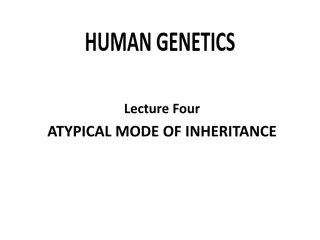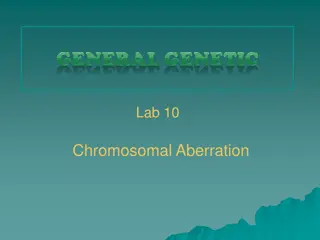Understanding Gene Pools, Allele Frequencies, and Mutations in Population Genetics
Dive into the significance of gene pools and allele frequencies, exploring how mutations drive the emergence of new alleles. Learn about factors impacting allele frequencies like mutations, environmental pressures, genetic drift, and gene flow. Discover the types of mutations and their effects on population genetic diversity.
Download Presentation

Please find below an Image/Link to download the presentation.
The content on the website is provided AS IS for your information and personal use only. It may not be sold, licensed, or shared on other websites without obtaining consent from the author. Download presentation by click this link. If you encounter any issues during the download, it is possible that the publisher has removed the file from their server.
E N D
Presentation Transcript
Learning Intention: To understand the significance of gene pools and allele frequencies. To understand how gene pool of a population causes changing of allele frequency To understand how mutations serve as the source of new alleles. Success Criteria: - I can state the significance of gene pools and allele frequencies. - I can explain the causes of changing allele frequency in the gene pool of a population. - I can explain how mutations serve as the source of new alleles. Study design dot point - causes of changing allele frequencies in a population s gene pool, including environmental selection pressures, genetic drift and gene flow, and mutations as the source of new alleles
Warm up Survey of traits in the classroom Students look around the classroom at their classmates and note the physical characteristics present in the room for eye colour, hair colour and hairline. Students explain these similarities and differences?
Gene Pool and allele frequency Key vocabulary Gene- A sequence of deoxyribonucleic acid (DNA) that codes for a particular characteristic or trait. Slight variations in the DNA sequence of a gene can result in different forms of a trait. These variations of a gene are called alleles. Gene pool the complete set of alleles present within a particular population. Allele frequency the proportion of certain alleles in a gene pool. Population a group of individuals of the same species living in the same location Genotype the genetic composition of an organism at a particular gene locus Phenotype the physical or biochemical characteristics of an organism that are the result of gene expression and the environment Genetic diversity the variation in genetic makeup or alleles within a population
Changes to allele frequency Different factors which influence gene pools and alter allele frequencies are: - Mutations - Environmental selection pressures - Genetic drift - Gene flow - Artificial selection pressures.
Mutation Mutations is a permanent change to the DNA sequence of an individual Based on occurrence it is of two types 1. Spontaneous 2. Induced Induced by agents known as mutagens A mutation can be categorised as beneficial, neutral, or deleterious, depending on the mutation s overall effect on individual fitness.
Types of mutation 1. Point mutations 2. Block mutation 1. Point mutation: Affect a single base in DNA by either: a) Substitution mutations b) Frame shift mutations - Insertion - Deletion These may occur in structural or regulatory genes.
a) Three type: - Silent mutations: a mutation that does not result in the change of a polypeptide product encoded by a gene. (doesn t change amino acid as still codes for same amino acid) - Nonsense mutations: a base substitution that changes the DNA triplet, so that instead of coding for an amino acid it codes for a STOP signal. - Missense mutations: a base substitution resulting in a single amino acid alteration within the polypeptide product. (One amino acid changes so protein will change). Can be further of two types: Conservative: a change in amino acids with similar chemical properties can be tolerated Non-conservative: a change in amino acids with different chemical properties polypeptide unable to carry out normal function Substitution mutations:
b) Frameshift mutation: Frameshift mutations involve the addition or deletion of one or two nucleotides, which alters the reading frame. Single base insertions and deletions that have a major effect on genes, as they alter the codon at the point of insertion or deletion and each codon thereafter. Insertion: when one nucleotide base is inserted into the DNA strand Deletion: when one nucleotide base is deleted from the DNA strand
2. Block Mutations Block mutations are chromosomal changes affecting larger sections of DNA. They involve the alteration of the structure of a chromosome by inserting, deleting, duplicating, or swapping a cluster of nucleotides, involving multiple different genes. These mutations usually occur during the process of meiosis. Position effects: the resulting effects of a block mutation that alters the activity or expression of a gene.
Summary Mutations are changes to genetic materials which can results in new alleles. Mutations may occur spontaneously or be induced by exposure to a mutagen. Mutations which occur in germline cells can continue in a population's gene pool. Mutations can result in faulty or non-functional proteins. Point mutations can be classified as either substitution mutations or frameshift mutations. Substitution mutations can affect the polypeptide chain differently and result in either silent, nonsense or missense mutations. Silent mutations do not change the amino acid in a protein. Missense mutations lead to the change in an amino acid in a protein. This can be conservative or non-conservative, which depends on the properties of the amino acid. Nonsense mutations introduce a stop codon, leading to a truncated protein. Frameshift mutations change the sequence of amino acids more significantly than most substitution mutations. This is because they alter the reading frame. Other mutations can involve large sections of chromosomes (block mutations), multiple nucleotides or even entire chromosomes.
A gene pool is the sum of alleles within a given population VCAA examination report note: The term gene pool was not well understood. It is incorrect to state that it is the genes in a population. Incorrect responses given by students included variation (this could be environmental), genotypes, allele frequency or traits in a population, or the sum of alleles in an individual, species or community. 45 per cent of students answered this question correctly.
Reflection Edrolo 9A Q 2-4, 10-13 Heinemann worksheet 30



